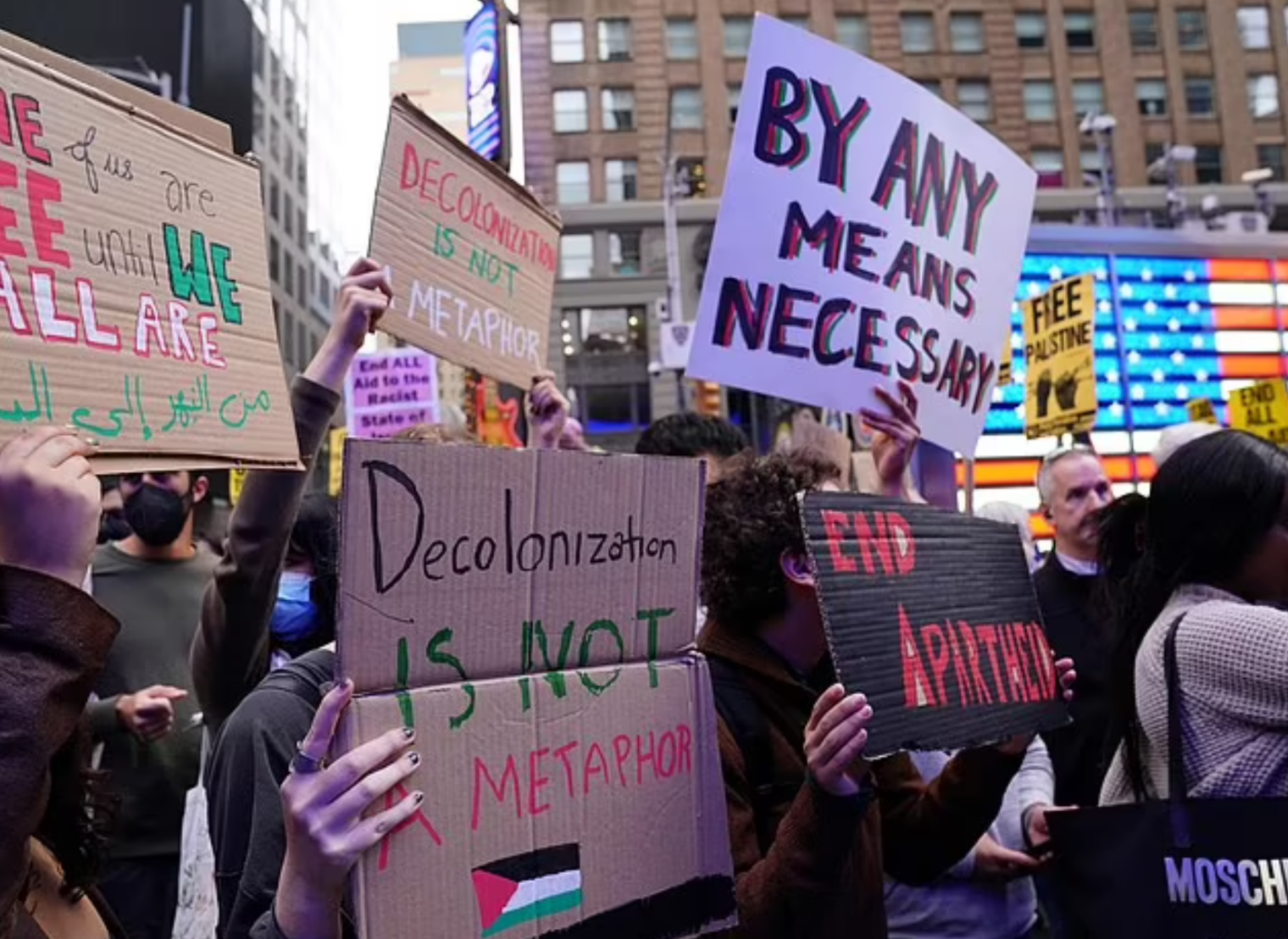How can Israel’s encirclement of Gaza City work if Hamas fighters can simply head south via tunnel?
A question for armchair general readers… We are informed that the IDF has surrounded Gaza City, is engaged in urban combat, and is hoping to kill or capture Islamic Resistance Movement (“Hamas”) and Palestinian Islamic Jihad soldiers (“freedom fighters” or “terrorists”, depending on your perspective; 300 University of California professors, who are also designing the state’s K-12 curriculum, say that the heroes of October 7 were fighting for freedom and are definitely not “terrorists” (letter)) via standard military encirclement tactics.
We were previously informed that there is an extensive tunnel network underneath Gaza. A CNN story reports a Hamas claim of having more than 300 miles of tunnels.
What stops the Hamas fighters from simply evading the IDF by proceeding south via tunnel? Once in the southern zone, the fighters can melt into the population that elected Hamas and continues to support Hamas according to opinion polls (example).
Has the IDF already cut the north-south tunnel links?
In other Gaza mysteries… here are Palestinian doctors giving a press conference in which they talk about how horrible Jewish doctors are:
Four weeks ago, we were told that the hospitals in Gaza had just a few days of fuel left for their generators. October 17, United Nations: “Fuel reserves at all hospitals across Gaza are expected to last for an additional 24 hours only.” Yet this video shows lights on, fully charged mobile phones, and clean scrubs that appear to be fresh from the washer/dryer. We are also told that Gaza has been without Internet for 32 days (example), yet a continuous stream of video content emerges from Gaza. (See also, a November 8 broadcast from the ICRC, in which people in clean clothes (both patients and health care workers) move around under blazing overhead lights.)
Paul Graham, of Y Combinator fame, has been dutifully posting press releases from Hamas regarding deaths among the noble Gazans at the hands of the genocidal Jews. Others seem to accept the relevance of body counts, but question whether Hamas is a reliable source. Graham then cites some people who think, as he does, that Hamas is a reliable source. Example:
One of the first things young doctors learn in training is “don’t order a test unless you know what you’re going to do with the result”. You’ve gathered and broadcast various body counts on one side of an active ongoing battle. What is the practical value of these numbers? Is there a threshold number at which you are planning to take some action or think that, e.g., NATO and the U.S. military should take some action? If so, what’s the threshold and the proposed action?
Graham didn’t answer, of course. From the United Nations side, the answer is never “Hamas should surrender and release its hostages,” but always “there should be a ceasefire [during which Hamas can be resupplied].” Is that the guaranteed subtext of all of these reports of casualties among Gazan fighters and civilians? If so, could Hamas achieve victory simply by killing a lot of civilians and making it look like Israel did it? Suppose that Hamas puts implosion charges around some apartment buildings and detonates them, for example, causing 10,000 civilians to die. Then Gazans use the Internet and electric power that we’re told they don’t have to broadcast images of the destruction. Then General Joe Biden uses the U.S. military to force the Israeli military to withdraw.
(Some more posts from Paul Graham:
A grim month: 31 Israeli and at least 3600 Palestinian children have been killed since October 7. (link)
Is there a threshold number of their constituents’ children dying that should motivate Hamas to surrender? Graham doesn’t say.
One gauge of the civilian toll in Gaza so far: At least 72 United Nations staffers have been killed in Gaza so far, the UN says. Whatever that is, it’s not surgical. (a repost)
Graham was thinking that all fighters in Gaza have RFID tags implanted, thus enabling the IDF to target only estimated 50,000-ish Gazans who carry guns for Hamas or Palestinian Islamic Jihad?
Graham reposted an article suggesting that Gazans do not support Hamas (which makes the IDF a liberation force?).
A November 2 tweet from Graham himself:
I didn’t get “Turn the other cheek” when I was a kid. Why let people hit you? But when you combine it with “Hurt people hurt people,” you see the point. You have to absorb hurt instead of merely reflecting it, or it just keeps cycling around forever. (link)
A suggestion that Israel ignore the cross-border excursion of October 7 in the same way that the U.S. ignores the daily cross-border excursions of noble migrants? An accusation that Palestinian Islamic Jihad members are defective “hurt people” rather than brave fighters for what they believe and for what is written in the Koran?
One in which Graham seems to agree with the idea that Israel is killing civilians intentionally and without any military goal (if true, why doesn’t Israel bomb the various outdoor mass gatherings of Gazans that we see on Twitter, Instagram, and Tiktok? The IDF could kill thousands of civilians with one bomb if that were its strategy):
Graham reposts an accusation about Israel’s purported “ethnic cleansing” plans. To my knowledge, he has never posted about Kuwait’s cleansing of 400,000 Palestinians in 1991 (Wikipedia) nor about Pakistan’s recent cleansing of 1.7 million Afghans.
Here’s a curious one:
It’s not a sufficient defense of activism to claim that it “increases awareness” of a problem. There are forms of activism that increase awareness and yet set back efforts to solve the problem.
Graham won’t leave his comfortable UK/US homes to help the Gazans defend against the Israeli aggression that he highlights (i.e., increases awareness about).
Graham reposts content from a nonprofit organization that doesn’t want Hamas stripped of its human shields in Gaza City:
Graham’s first posts about the battles in and near Gaza were on October 11. Example:

The events of October 7 were not “a humanitarian catastrophe” for anyone (as far as I can tell, Graham never posted anything about the Hamas freedom fighters’ October 7 operation in which Israeli civilians were the victims). The “humanitarian catastrophe” is that people embroiled in a war will be short of electricity for a while.
(A Ukrainian friend after reviewing the Paul Graham oeuvre: “These people weren’t posting like maniacs when half of Ukraine was without power for several days, including including dozens of hospitals in EACH city.”)
That’s your analysis of world events from the Great Statesman of California Tech.
Circling back, so to speak, to the main topic of this post… how is encircling an enemy effective when the enemy has tunnels leading to safe spaces with millions of friendly civilians on the ground?
Related:
- “Behind Hamas’s Bloody Gambit to Create a ‘Permanent’ State of War” (NYT, today): Thousands have been killed in Gaza, with entire families wiped out. Israeli airstrikes have reduced Palestinian neighborhoods to expanses of rubble … But in the bloody arithmetic of Hamas’s leaders, the carnage is not the regrettable outcome of a big miscalculation. Quite the opposite, they say: It is the necessary cost of a great accomplishment — the shattering of the status quo and the opening of a new, more volatile chapter in their fight against Israel. It was necessary to “change the entire equation and not just have a clash,” Khalil al-Hayya, a member of Hamas’s top leadership body, told The New York Times in Doha, Qatar. “We succeeded in putting the Palestinian issue back on the table, and now no one in the region is experiencing calm.” … “I hope that the state of war with Israel will become permanent on all the borders, and that the Arab world will stand with us,” Taher El-Nounou, a Hamas media adviser, told The Times. … [the October 7 attack] broke a longstanding tension within Hamas about the group’s identity and purpose. Was it mainly a governing body — responsible for managing day-to-day life in the blockaded Gaza Strip — or was it still fundamentally an armed force, unrelentingly committed to destroying Israel and replacing it with an Islamist Palestinian state? … “Hamas’s goal is not to run Gaza and to bring it water and electricity and such,” said Mr. al-Hayya, the politburo member. “Hamas, the Qassam and the resistance woke the world up from its deep sleep and showed that this issue must remain on the table.”
- “Dabblers And Blowhards”, a 2005 look at Paul Graham’s “Hackers and Painters”: Computer programmers cause a machine to perform a sequence of transformations on electronically stored data. Painters apply colored goo to cloth using animal hairs tied to a stick. … Great paintings, for example, get you laid in a way that great computer programs never do. Even not-so-great paintings – in fact, any slapdash attempt at splashing paint onto a surface – will get you laid more than writing software, especially if you have the slightest hint of being a tortured, brooding soul about you. For evidence of this I would point to my college classmate Henning, who was a Swedish double art/theatre major and on most days could barely walk. Also remark that in painting, many of the women whose pants you are trying to get into aren’t even wearing pants to begin with. Your job as a painter consists of staring at naked women, for as long as you wish, and this day in and day out through the course of a many-decades-long career. Not even rock musicians have been as successful in reducing the process to its fundamental, exhilirating essence.































